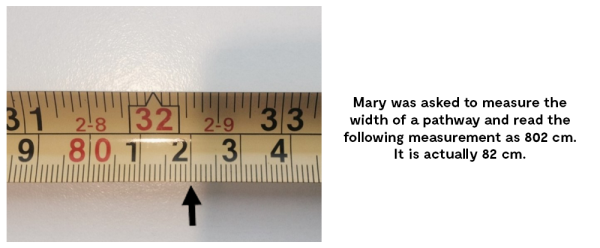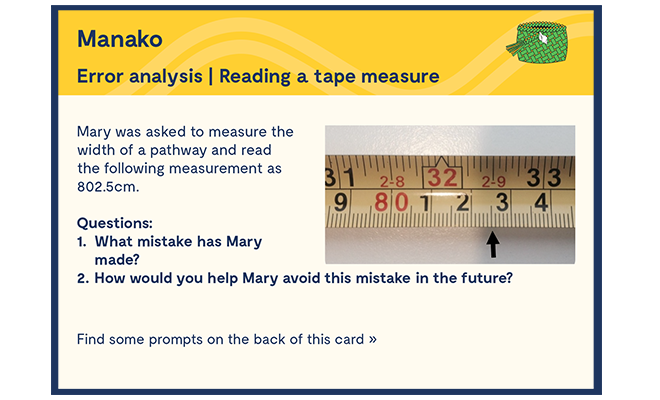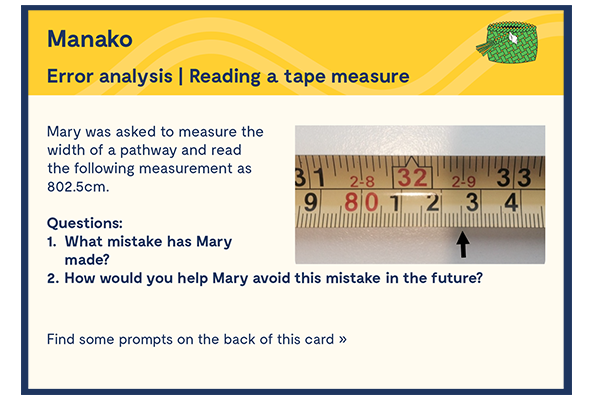Reading a tape measure Step 2 | Why is the learner making this mistake?
Understand why Mary made this mistake and what can be done about it.
This is a common error caused by a misunderstanding about how measuring tapes work.
Tape measures are more difficult to read than most people realise. Firstly, tape measures come in several different formats (metres, centimetres and millimetres) and many tapes use ‘signal points’ to mark ‘tens’. In the example below, Mary has made the most common error. She has misunderstood how the numbers are laid out on the tape.
Look carefully at the image and try to work out what Mary has done and why she has done it.

Mary has looked at the ‘80’ and then the ‘2’ and concluded that the measurement is 80 and 2 (802) rather than 80 plus 2 (82).

Her error stems from not understanding that the ‘80’ is a tens marker. To save space on the tape only the tens are shown. This is why the ‘80’ is in a red font, and the rest in black.
Misreading a measuring tape in this way can be addressed through this learning sequence

